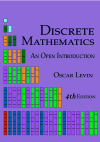1.
We will say that two numbers between 1 and 31 are related, written
(a)
Which of the following are true? That is, which of the following pairs of numbers are related as we have defined above?
(b)
Which of the following statements are true about the
- For any numbers
- For any numbers
- For any numbers
(c)
We will write
Are there any numbers that are in more than one of the sets
- Yes
- No

